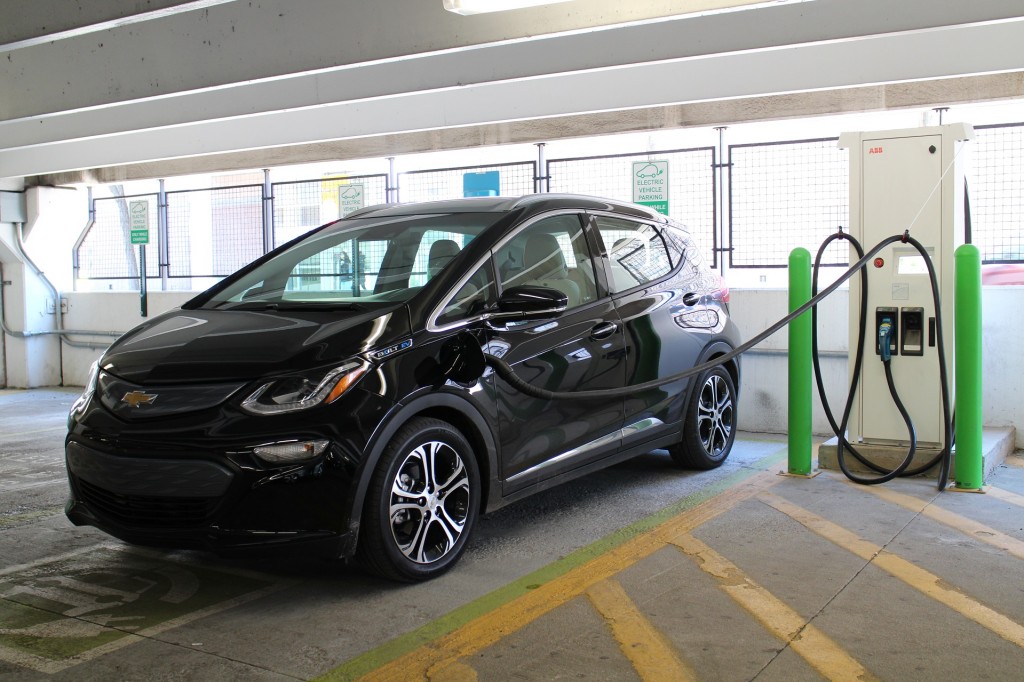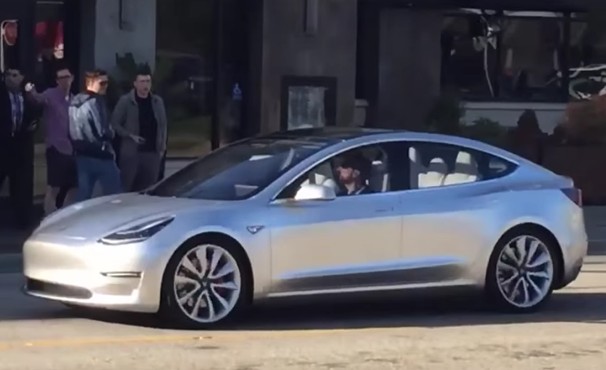Studies have shown that electric vehicles have a number of strikes against them in the minds on consumers who don't know much about them.
Range anxiety, the lack of electric vehicle charging infrastructure—or even awareness that it exists—and high purchase prices all play a part in the challenges faced by electric cars.
However, a new study suggests that electric vehicles will cost less than a normal, gasoline-powered car sooner rather than later.
DON'T MISS: How much have electric-car battery costs fallen? This much!
The study comes from Bloomberg New Energy Finance, and its findings project that electric cars will carry retail prices lower than those of regular cars as soon as the year 2025.
The largest factor in the plummeting prices involves the cost of batteries, which make up the largest portion of the cost associated with electric cars.
By 2030, the price of batteries is expected to have decreased 77 percent from today's levels.

2017 Chevrolet Bolt EV electric car at EVgo fast-charging station, Newport Centre, Jersey City, NJ
It should be noted this study looks at the actual price of electric vehicles, not the total cost of ownership over the lifetime of the vehicle.
However, there's even better news on that front as well.
By next year, the lifetime cost of ownership in Europe of an electric car is expected to dip below a conventional, internal-combustion engine vehicle, according to a study by UBS.
READ THIS: UBS study predicts electric-car cost parity in Europe could arrive by 2018
The same study also predicted 14 percent of new car sales will be electrified vehicles in 2025—around 100 million electric cars globally.
It doesn't seem far-fetched as European countries move to ban older diesel cars and a push for electrification occurs across the globe.
Electric cars do not have nearly as many moving parts as a regular vehicle, which helps the propulsion method achieve cost parity quicker.

Tesla Model 3 Driving on a Public Road
The lack of an engine, transmission, and other components means service visits are fewer and aren't nearly as frequent.
And as the price of batteries continues to fall, there will certainly be technology improvements along the way.
Range distances will likely climb far beyond the 200-mile mark, which will also help ease consumers' fears of range anxiety.
CHECK OUT: Electric Car Price Guide: every 2017 all-electric car, with specs (updated)
The first such car is the 2017 Chevrolet Bolt EV, EPA-rated at 238 miles, and a number of other sub-$40,000 entries with ranges of 200 miles or more are set to arrive over the next two or three years.
Whether the adoption rate will gradually climb or price parity will lead to a "hockey stick" growth curve in which mass consumer demand turns up sharply remains to be seen.
But it seems safe to suggest that with studies like this, the potential for electric-car sales continues to brighten—even if the schedule remains in considerable debate.
_______________________________________________












